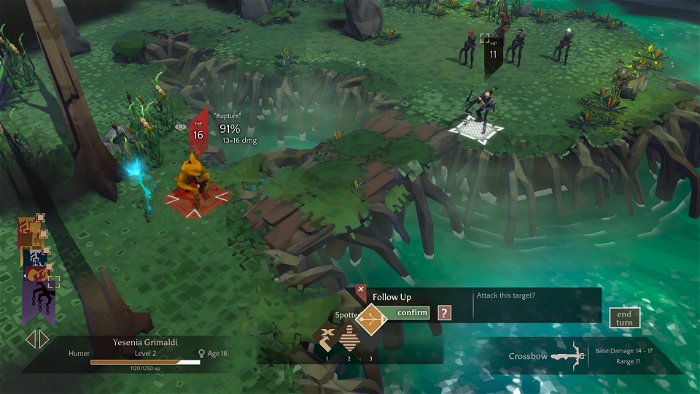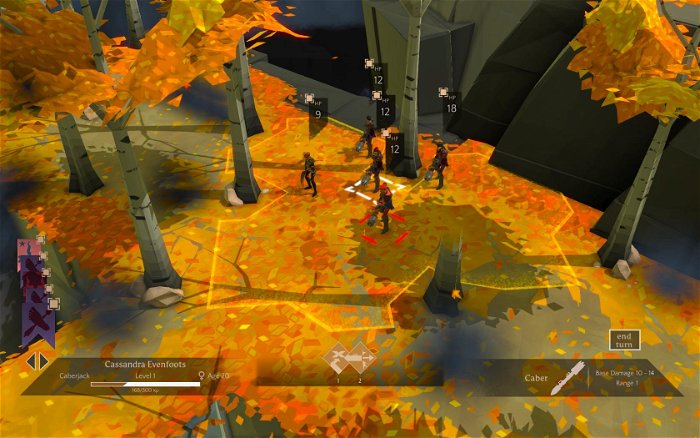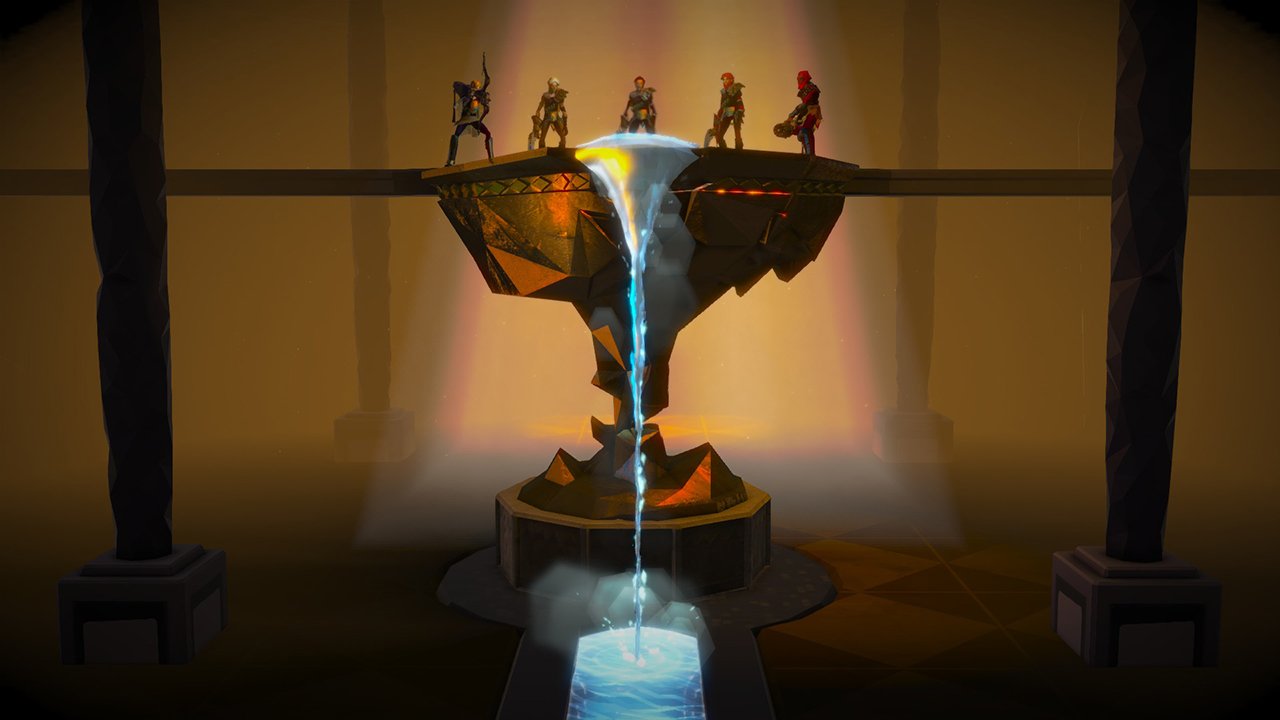There’s a simplicity to Double Fine Productions’ Massive Chalice that could be mistaken for a lack of depth. During the tactical, turn-based combat sections, soldier units don’t hide in cover to lessen damage or team up for more powerful attacks; they just have to be positioned properly on the battle map. The larger, strategic element of the game doesn’t provide multiple resources to manage; players are just forced to pick whether to research, upgrade, or recruit units and wait until that task is completed before moving on. This kind of streamlining could easily have led to a shallow experience, but it hasn’t. Instead, Massive Chalice is an example of how well a strategy game can work when distilled down to the genre’s foundation.
The goal of the game’s campaign is to give the Chalice—an enormous (massive?) talking cup that summons and guides the all-seeing player character—the time it needs to gather its magical powers and expel a destructive enemy force from the pseudo-medieval world. The rub is that this process takes about 300 years, during which monsters (called Cadence) will attack the player’s fortresses and attempt to overrun their Capital. To fight them off it’s necessary to grow an inter-generational army by arranging marriages, allow the resulting children to grow into adults, and then send them off to battle.

Combat takes place in turns, with five heroes (explosive-tossing Alchemists, bow-hunting Hunters, and melee-focused Caberjacks) facing off against a group of Cadence monsters. While there isn’t a ton of variety in player or enemy unit types, relatively small health bars and inventive enemy types make every skirmish tense enough to require careful thought (especially in the early parts of the game). One creature—the Bulwark—shields itself from damage after a single attack, which means that taking it out without the attacker being killed requires a bit of extra preparation. There may not be many gameplay systems to juggle, but the few variables at play allow for enough variation that it never feels like the game is in need of extra unit types or battle mechanics.
The combat encounters and army management are made more appealing by Massive Chalice’s distinct audio-visual presentation. Battle maps and characters are rendered in impressionist style, fine details omitted in favour of bold splashes of colour—think Kentucky Route Zero by way of Proteus. This is coupled with a beautifully orchestrated score that underscores fights with plaintive strings at one moment and spirited guitar plucking at another. The striking art and sound direction is accompanied with solid writing and voice acting as well. Massive Chalice’s take on the fantasy genre is inventive and peppered with the kind of humour that, by now, has become an expected trait of Double Fine’s games. From the talking Chalice, whose two distinct voices often bicker with one another while narrating, to the text that fills in research path descriptions, the writing maintains a wonderful tone of delight. There’s a kind of liveliness to everything about the game—and it gives the impression that Massive Chalice is being developed by people who truly love their creation.

Still, as fully realized as the game’s aesthetic and gameplay systems are, there are rough patches. The straightforward design of Massive Chalice’s combat and management systems means that small imbalances in difficulty—whether it’s a slightly overpowered enemy or an upgrade that takes just a bit too long to research—can torpedo an attempt at finishing a run through the campaign that’s otherwise going well. This becomes especially frustrating in the latter half of the game, when hordes of stronger, “advanced” forms of familiar enemies swarm the Heroes in great numbers. On the flipside, a group of high level characters can too easily win a battle if matched up against the right variety of Cadence enemy types only a few hours earlier. These inconsistent combat challenges also highlight the fact that many of the game’s maps are simply too big. Moments when the player has to cautiously hunt down a remaining group of monsters can create a great sense of tension, but too often the sheer scale of the environments makes these scenarios tedious. Even though the combat and strategy mechanics are well designed, they’re in need of quite a bit of refinement.
Considering that Massive Chalice is still an incomplete Beta, there’s reason to hope that these issues will be cleared up before the final release. And, luckily, none of the Early Access version’s problems detract too much from what is largely a great experience. By designing a strategy game that favours sound fundamentals over complex systems, Double Fine has managed to make something that plays—and looks—unlike its peers. Massive Chalice may not be finished yet, but, despite the annoyances of its uneven difficulty, it already offers an enjoyable and unique take on a familiar genre.




